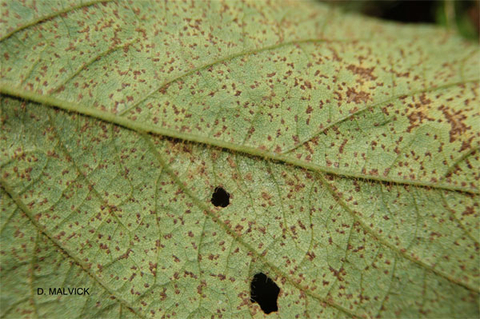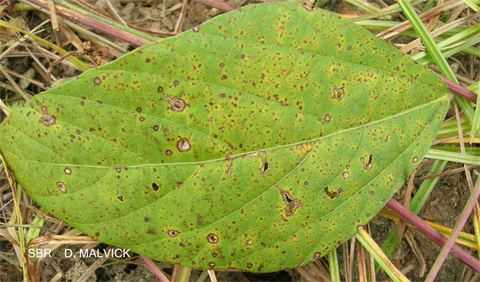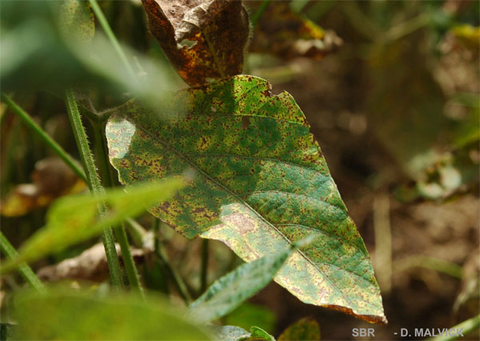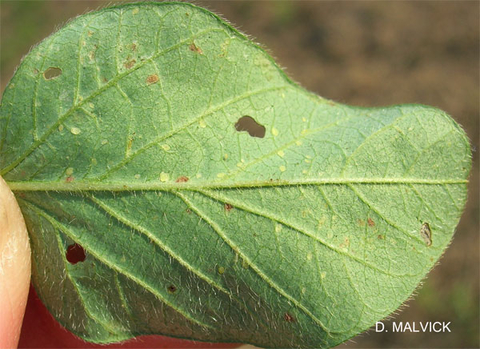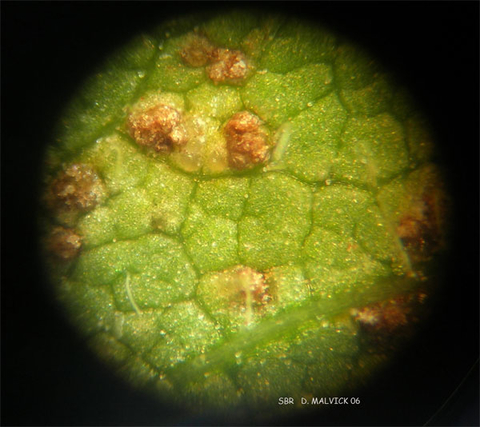Soybean rust is potentially one of the most significant diseases of soybean. It can spread quickly and cause leaf spots and defoliation of soybean plants. Under favorable conditions, the pathogen can cause yield losses greater than 50 percent. Soybean rust was first found in the continental United States in the South in 2004. Since then, the disease has spread northward each growing season and has been found at low levels in the upper Midwest.
Symptoms
Symptoms begin on leaves in the lower plant canopy. Tan or reddish-brown lesions (spots) develop first on the underside of leaves. Small pustules (blisters) develop in the lesions, which break open and release masses of tan spores. The lesions and pustules, which can be seen with a 20X hand lens, may also appear on pods and stems. Early symptoms of soybean rust (before pustules develop) are difficult to distinguish from other common leaf diseases on soybean.
Conditions and timing that favor disease
Soybean rust can occur at all stages of soybean development, but is most common in or after the plants begin flowering and pods start developing in the middle of the growing season. Plants are most susceptible during reproductive stages. Extended periods of wet weather, moderate temperatures (59 degrees F to 85 degrees F), and high humidity (over 75 percent) favor disease development.
Causal pathogen
Two species of rust fungi cause soybean rust - Phakopsora pachyrhizi(aggressive Asian pathogen) and P. meibomiae (mild pathogen). OnlyP. pachyrhizi causes significant yield losses. Both fungi cause the same symptoms and can only be distinguished with specialized laboratory tests. P. meibomiae has not yet been found in the continental U.S. These fungi are obligate pathogens that survive only on green, living host plant tissue and are readily dispersed long distances by wind. The fungus survives winter on living plant tissue in the southern states and Mexico. Spores must be transported northward each growing season from areas in the south.
Disease management
Scout the lower canopy of fields weekly, especially during wet weather after soybeans begin to flower. Soybean rust must be diagnosed at an early stage to be successfully managed. Cultural practices have had little effect on the disease. Soybean rust must be managed with the judicious use of fungicides applied properly and at the correct time. Soybean varieties that are resistant to soybean rust are in development.
Reviewed in 2018


